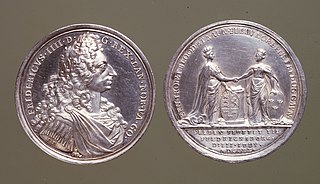External links
| | This article related to English law is a stub. You can help Wikipedia by expanding it. |
The Treaty of Dordrecht was signed on 14 February 1489 between Holy Roman Emperor Maximilian I and King Henry VII of England. Based on the terms of the treaty, both parties agreed to establish an alliance in order to help the Bretons.

The European Union (EU) is a supranational political and economic union of 27 member states that are located primarily in Europe. The union has a total area of 4,233,255 km2 (1,634,469 sq mi) and an estimated total population of nearly 447 million. The EU has often been described as a sui generis political entity combining the characteristics of both a federation and a confederation.

The Treaty of Versailles was a peace treaty signed on 28 June 1919. As the most important treaty of World War I, it ended the state of war between Germany and most of the Allied Powers. It was signed in the Palace of Versailles, exactly five years after the assassination of Archduke Franz Ferdinand, which led to the war. The other Central Powers on the German side signed separate treaties. The United States never ratified the Versailles treaty and made a separate peace treaty with Germany. Although the armistice of 11 November 1918 ended the actual fighting, it took six months of Allied negotiations at the Paris Peace Conference to conclude the peace treaty. Germany was not allowed to participate in the negotiations—it was forced to sign the final result.

A treaty is a formal, legally binding written agreement between actors in international law. It is usually made by and between sovereign states, but can include international organizations, individuals, business entities, and other legal persons. A treaty may also be known as an international agreement, protocol, covenant, convention, pact, or exchange of letters, among other terms. However, only documents that are legally binding on the parties are considered treaties under international law. Treaties vary on the basis of obligations, precision, and delegation.
The Treaties of Stockholm are two treaties signed in 1719 and 1720 that ended the war between Sweden and an alliance of Hanover and Prussia.
A memorandum of understanding (MoU) is a type of agreement between two (bilateral) or more (multilateral) parties. It expresses a convergence of will between the parties, indicating an intended common line of action. It is often used either in cases where parties do not imply a legal commitment or in situations where the parties cannot create a legally enforceable agreement. It is a more formal alternative to a gentlemen's agreement.
The Merger Treaty, also known as the Treaty of Brussels, was a European treaty which unified the executive institutions of the European Coal and Steel Community (ECSC), European Atomic Energy Community (Euratom) and the European Economic Community (EEC). The treaty was signed in Brussels on 8 April 1965 and came into force on 1 July 1967. It set out that the Commission of the European Communities should replace the High Authority of the ECSC, the Commission of the EEC and the Commission of Euratom, and that the Council of the European Communities should replace the Special Council of Ministers of the ECSC, the Council of the EEC and the Council of Euratom. Although each Community remained legally independent, they shared common institutions and were together known as the European Communities. This treaty is regarded by some as the real beginning of the modern European Union.

The Treaty of Frederiksborg was a treaty signed at Frederiksborg Castle, Zealand, on 3 July 1720, ending the Great Northern War between Denmark-Norway and Sweden.

The Treaty of Windsor is the diplomatic alliance signed between Portugal and England on 9 May 1386 at Windsor and sealed by the marriage of King John I of Portugal to Philippa of Lancaster, daughter of John of Gaunt, 1st Duke of Lancaster. With the victory at the Battle of Aljubarrota, assisted by English archers, John I was recognised as the undisputed King of Portugal, putting an end to the interregnum of the 1383–1385 Crisis. The Treaty of Windsor established a pact of mutual support between the countries.

The Treaty of Kraków was signed on 8 April 1525 between the Kingdom of Poland and the Grand Master of the Teutonic Knights. It officially ended the Polish–Teutonic War.
The Treaty of Kulja was an unequal treaty between Qing China and the Russian Empire, signed in 1851, opening Kulja and Chuguchak to Sino-Russian trade. Prepared by the first Russian consul to China, Ivan Zakharov, the treaty was preceded by a gradual Russian advance throughout the nineteenth century into Kazakhstan in direct competition with British efforts to impose self-advantageous trade terms on China.
The Treaty of Vienna or Peace of Vienna of 1738 ended the War of the Polish Succession. By the terms of the treaty, Stanisław Leszczyński renounced his claim on the Polish throne and recognized Augustus III, Duke of Saxony. As compensation he received instead the duchies of Lorraine and Bar, which was to pass to France upon his death. He died in 1766.
The Treaty of Zuhab, also called Treaty of Qasr-e Shirin, was an accord signed between the Safavid Empire and the Ottoman Empire on May 17, 1639. The accord ended the Ottoman-Safavid War of 1623–1639 and was the last conflict in almost 150 years of intermittent wars between the two states over territorial disputes. It can roughly be seen as a confirmation of the previous Peace of Amasya from 1555.
Treaty 11, the last of the Numbered Treaties, was an agreement established between 1921 and 1922 between King George V and various First Nation band governments in what is today the Northwest Territories.
The Treaty of Huế was signed on April 14, 1863, between representatives of Đại Nam and the French Empire. Based on the terms of the accord, three Vietnamese ports were opened. Moreover, freedom of missionary activity was permitted and Vietnam's foreign affairs were under French imperial protection. Saigon, seized by the French in 1862, was declared the capital of French Cochinchina. Overall, the treaty confirmed the tenets of the First Treaty of Saigon.
The Treaty of Casalanza, which ended the Neapolitan War, was signed on 20 May 1815 between the Napoleonic Kingdom of Naples on the one hand and the Austrian Empire, as well as the Great Britain, on the other. The signature occurred in a patrician villa, owned by the Lanza family, in what is now the commune of Pastorano, Campania, southern Italy.

Crépy, formerly known as Crépy-en-Laonnais, is a commune in the Aisne department in Hauts-de-France in northern France.

Ribemont is a commune in the Aisne department in Hauts-de-France in northern France. It is the birthplace of Marquis de Condorcet (1743-1794), figure of the French Revolution

Peace of Brześć Kujawski was a peace treaty signed on December 31, 1435, in Brześć Kujawski that ended the Polish–Teutonic War (1431–1435). The treaty was signed in the aftermath of the Livonian Order's defeat at the hands of the allied Polish-Lithuanian force in the Battle of Wiłkomierz. The Teutonic Knights agreed to cease their support to Švitrigaila and in the future to support only Grand Dukes properly elected jointly by Poland and Lithuania. The treaty did not change borders determined by the Treaty of Melno in 1422. The Peace of Brześć Kujawski showed that Teutonic Knights lost their universal missionary status. Teutonic and Livonian Order no longer interfered with Polish–Lithuanian affairs; instead Poland and Lithuania involved themselves in the Thirteen Years' War, the civil war in Prussia that tore it in half.
The Polish–German Treaty of Good Neighbourship and Friendly Cooperation was signed between the Federal Republic of Germany and the Republic of Poland on 17 June 1991. It supplemented the German–Polish Border Treaty signed in 1990.
Capital punishment in Costa Rica was abolished in 1877. Costa Rica was one of five countries to abolish the death penalty for all crimes prior to the beginning of the 20th century.